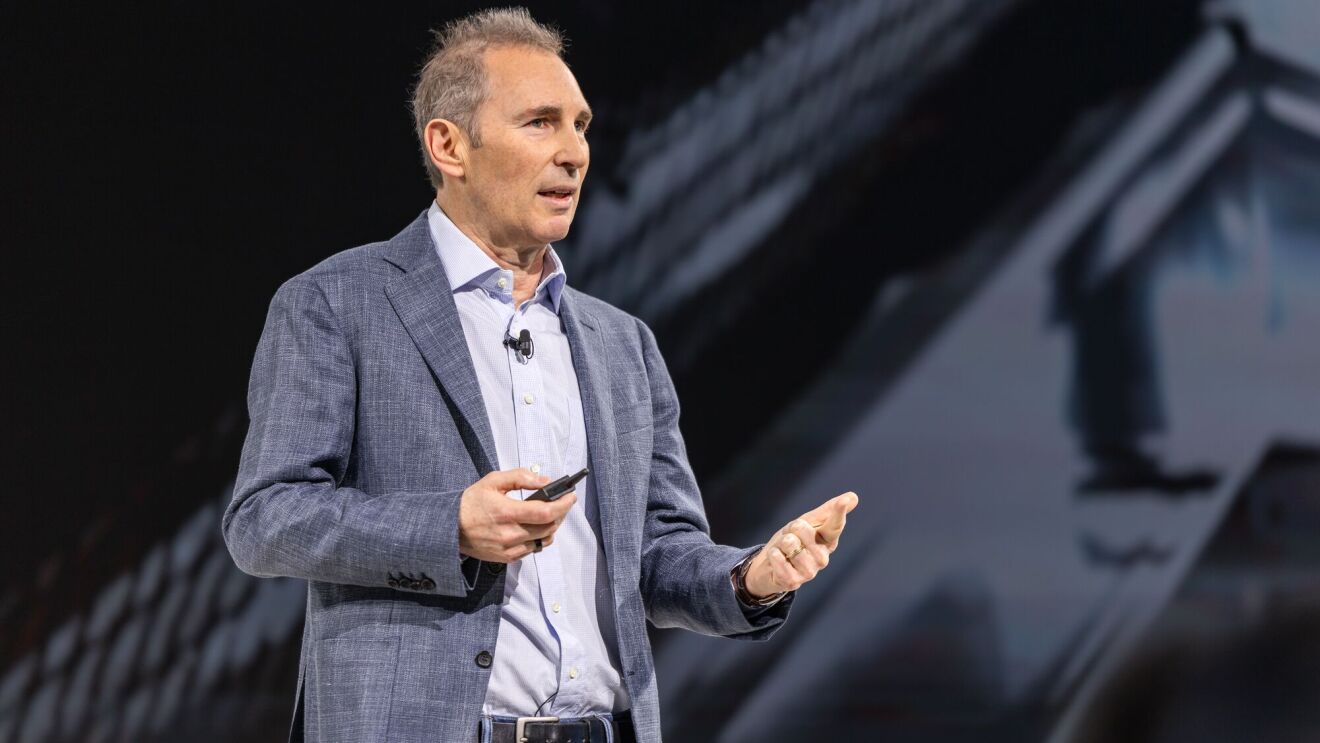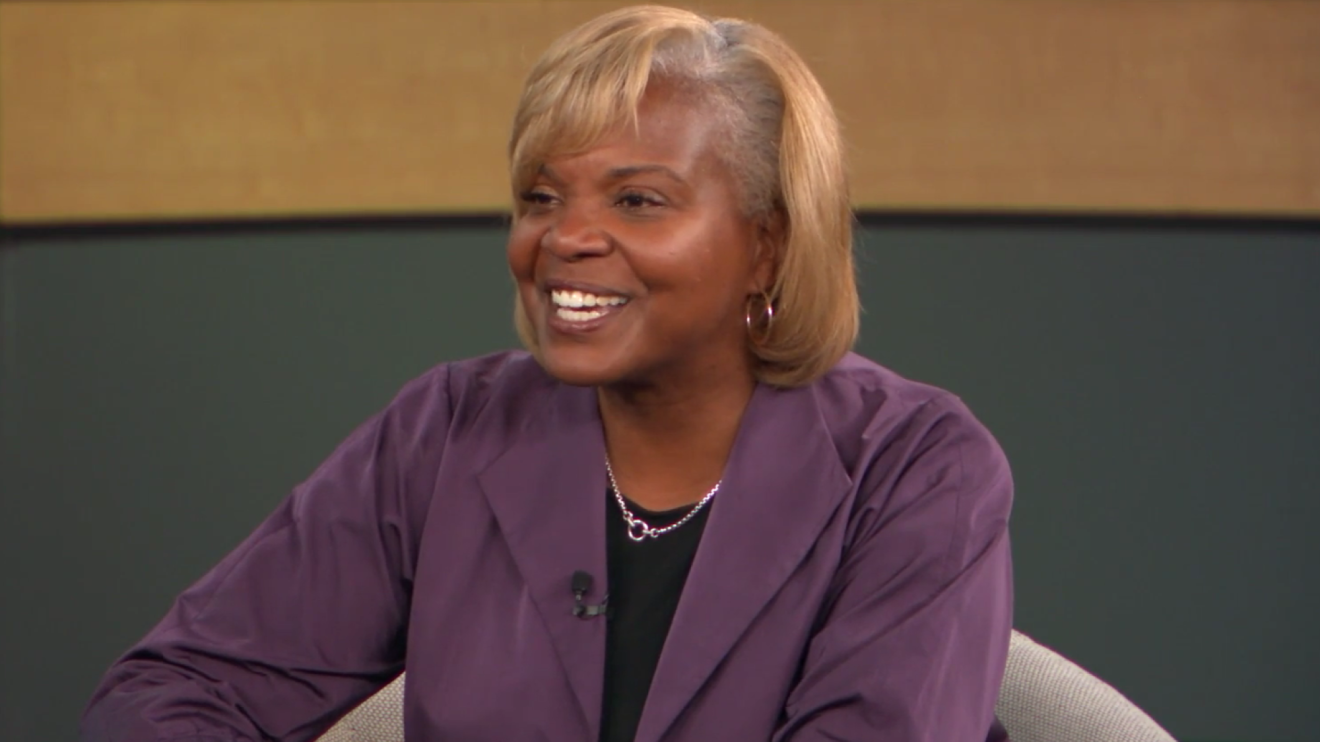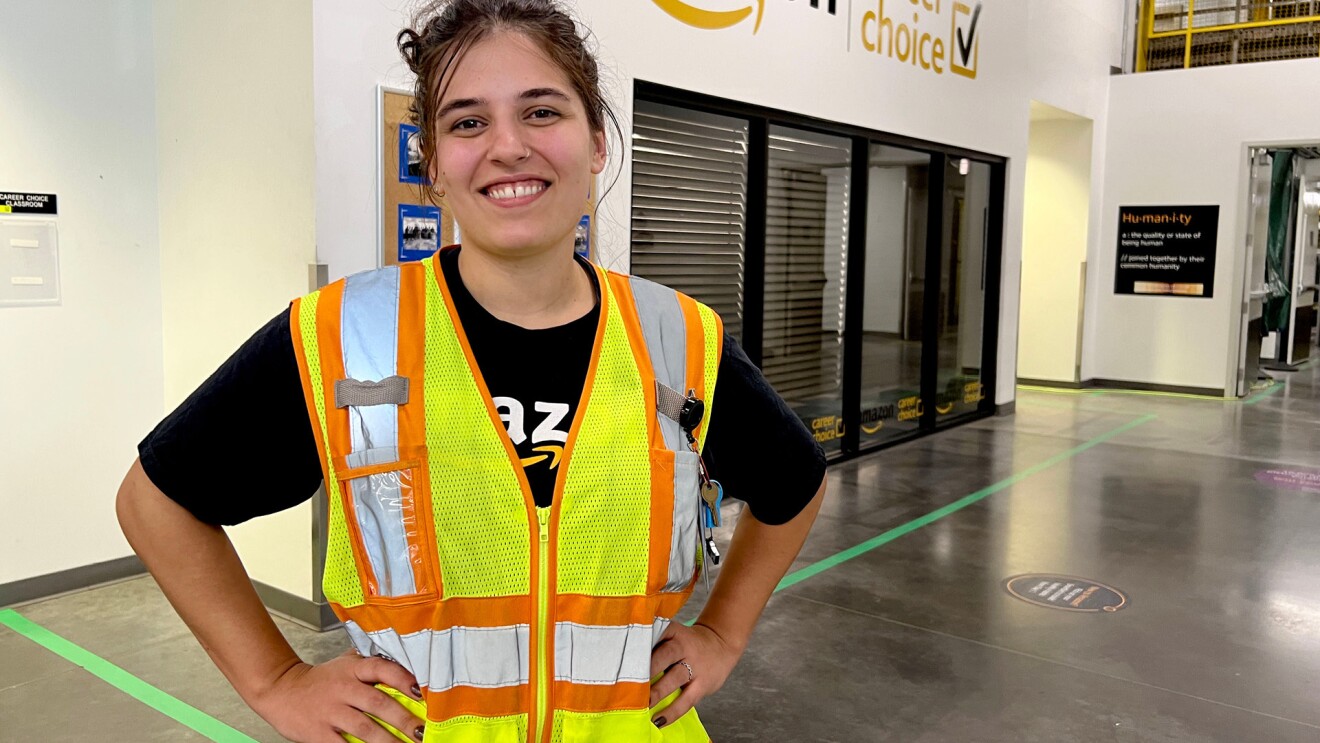Shortly after Alyssa Cox started working at Amazon, a decade ago in a fulfillment center, she volunteered to pose for recruiting posters. She stepped forward, smiled for an Amazon photographer, and forgot about it.
A few years later, friends working at Amazon in other states started texting her selfies while posing with her life-sized recruiting poster. “They would say, ‘Hey, I saw you today!’ It was a good laugh,” Alyssa recalled. Then she forgot about it.
Alyssa is now an Amazon recruiter at the same fulfillment center in Sumner, Washington. And in a serendipitous twist, her new team is the same team that photographed her years before—something they all discovered when one of Alyssa’s life-sized posters tumbled out of an office closet.
“It was really cool, a kismet thing that the one poster that rolled out ended up being me,” said Alyssa, who now helps other Amazon employees find roles that are right for them.

Alyssa’s path from an hourly employee in field operations to a salaried human resources employee represents the Amazon way. So far this year, of the 4,207 field operations promotions within fulfillment centers, 91%, were filled by employees already in the field.
“We look to promote from within, and the data shows that we do,” said Luli Chaluleu, director of talent acquisition at Amazon. “My team recruits amazing talent into good jobs at Amazon, and it’s always fun to watch our employees succeed and grow.”
Alyssa started working at Amazon as a temporary employee 10 years ago. In that first role, she made sure all the products that were supposed to be in specific bins were in the correct bins. It was important work, and Alyssa was good at it. She counted items in thousands of bins during peak season. She was hired as a full-time employee just three months after she started.
She then worked her way up through a series of other roles in the fulfillment center: She learned how the fulfillment center worked, then moved to the "inbound" side of the business, which handles all the arriving merchandise. She made sure merchandise was properly stowed. She planned employees' shifts.
She saw even more variety in her work when her fulfillment center started being used for research and development. The facility was among the first Amazon fulfillment centers to use Kiva robots—those machines that look like big, orange, super-smart Roombas. The machines bring bins holding merchandise to workers preparing customer orders, so employees don’t have to spend time walking around the large fulfillment centers to locate products.
Alyssa gained more responsibility in her role, and a manager suggested she consider a role in recruiting. She connected with people in HR and recruiting to learn more about potential roles.
“My page of notes was full,” she said. “I was so excited about it!”
She earned the role of recruiting coordinator. Her responsibilities included contacting candidates and helping organize recruiting events. After eight months, she became a recruiter. She now hires people for Amazon in Washington, Oregon, California, New Mexico, Arizona, and Texas.
Alyssa’s advice to people looking for promotions within Amazon, or any company, is to talk with a manager—even someone who isn’t their current manager.
“They’re willing to help you,” she said.
Trending news and stories
- Amazon unveils 7 new robots powering faster, safer deliveries: Go inside our most innovative delivery station yet
- Introducing Vulcan: Amazon's first robot with a sense of touch
- This new AI tech will make sorting packages easier for Amazon's delivery station employees
- How Amazon helps data center communities thrive










